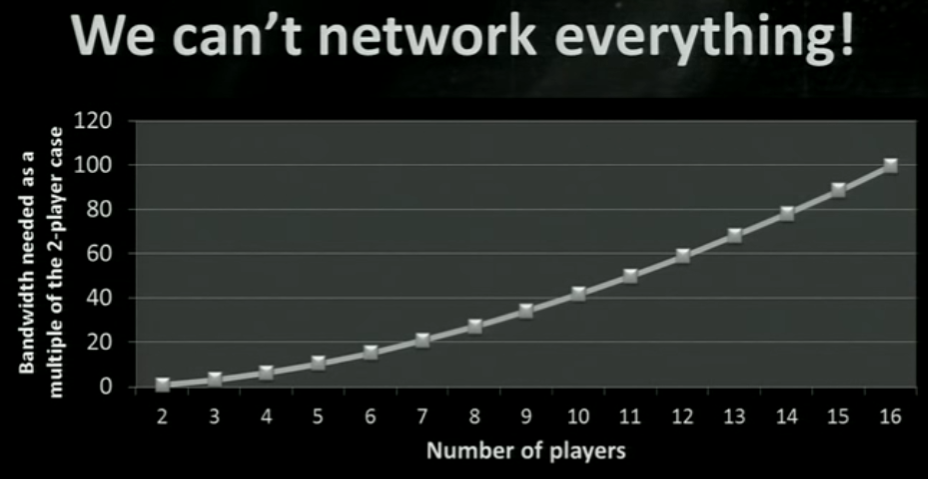I Shot You First: Networking the Gameplay of Halo: Reach
Refer to: I Shot You First: Networking the Gameplay of Halo: Reach
Architecture
Common simplifying approaches
Lockstep(deterministic, input-passing)
对于输入和模拟及时性要求不高的游戏,例如RTS。
通过Game Loop来控制游戏的演进
Reliable transport protocols(TCP or homegrown)
需要高带宽和可靠的环境
TCP的延迟问题需要解决
Send all networked state as a single blob(atomically)
总是同步所有物体的情况,对于小规模的网络是非常好的
Halo has to solve the hard problem
Highly competitive multiplayer action game
对于现代的射击游戏,每个玩家都会对游戏产生关键影响,生成大量数据
显然,将一切物体网络化(需要同步)的成本是非常高的
TRIBES points the way
The TRIBES Engine Networking Model
A host/client model, resilient to cheating
Protocols for semi-reliable data delivery(不强制重传)
Terms
Replication
The communication of state or events to a remote peer
peers 之间的同步性
Authority
Permission to update the persistent sate of an object
Prediction
Extrapolating the current properties of an entitiy based on historial authoritative data and local guesses about the future
客户端在收到两个网络状态(信息)之间,本地对网络游戏物体的预测、判断
Bungie’s Networking Stack
| Layer | Purpose |
|---|---|
| Game | Runs the game |
| Game Interface | Extract and apply replicated data(提取游戏世界中的定量数据) |
| Prioritization | Rate the priority of all possible replication options (选择优先发送什么数据) |
| Replication | Protocols with various reliability guarantees |
| Channel Manager | Flow and congestion control |
| Transport | Send & receive on sockets |
Replication Protocol
State Data
hots -> only client
Guaranteed eventual delivery of most current state, host -> client only
Object position
Object health
Other Key Game Info
Events(describing transitions )
Unreliable notifications of transient occurrences, telling why something happen.
Why player is dead
host -> client and client -> host
Fire the Weapon
This weapon was fired
几乎所有Event都有可能被dropped